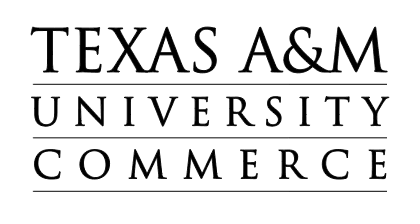Master of Science
In seeking admission to any Master’s program in art it is necessary to apply separately to the Department of Art and the Graduate School. Inquiries to the Department of Art should be directed to the Graduate Coordinator, who in turn will supervise the application process. The application will include a selection of slides representing the applicant's undergraduate work. In general, M.A. and M.S. students in art work closely with the Graduate Coordinator and a faculty advisor who outline and supervise their program of study. Degree plans are designed individually for each student. Application deadlines for admission to the Department of Art are as follows: February 1 - all materials due for fall admission; November 1 - all materials due for spring admission. For fall and spring admission all graduate assistant applications must also meet these deadlines.
Transfer Credit
Graduate Faculty may accept a maximum of 12 semester hours for the M.A. or M.S. degrees or up to 1/3 of the credit required for a Master’s degree as transfer credit from another accredited graduate school. Transfer credit must be in art and will be granted only for those courses in which the student received a grade of “B" or better and for which evidence of work can be demonstrated in the form of a portfolio review. Students desiring to transfer courses toward their degree requirements must complete a Graduate Transfer Course Request Form, available in the department office. Students concurrently enrolled or enrolled at another institution during the final semester in a program can anticipate a one-semester delay in graduation. The combination of transferred credit and credit earned by extension may not exceed 12 semester hours or 1/3 of the credit required for the Master's degree.
Requirements
Option I. A 10-course program or 30 semester hours, which includes two courses for thesis preparation. From two to four courses may be taken outside the major, and four courses in one subject may be designated as a minor. As this option requires a thesis, an advisory committee is also required. (See M.A. Advisory Committees In Studio Art)
Option II. A 12-course academic program, which consists of the following:
- A major consists of six courses or 36 semester hours including one course in the major department numbered 595, Research Literature and Techniques.
- In addition to the major area of study, up to 16 semester hours in additional related fields may be chosen with departmental approval. An approved sequence of at least four courses within a second subject area may, if the student wishes, be designated on the graduate record as a minor.
Miscellaneous
Graduate students pursuing the M.A. and M.S. degrees in studio art are required to participate in the mid-term and final graduate reviews, as are the students en route to the M.F.A. degree.
The method used to evaluate the graduate reviews is the Graduate Review Form (G.R.F.), which the members of the faculty complete following the day of the reviews. The G.R.F. informs the student of progress or deficiencies in a clear, objective and useful manner as measured against the standards and criteria of graduate study at A & M Commerce. The graduate coordinator collects the G.R.F. forms and the student's primary advisor takes into consideration this data while assigning the grade. The G.R.F. forms are then copied and returned to the student by the department office and become a permanent part of the student's file.
Credit earned over six years prior to graduation will require specific written department justification and approval by the Dean for Graduate Studies and Research in order to be counted towards a Master's degree. In no case may courses more than ten years old be counted towards a Master's degree.
With the approval prior to enrollment of the Dean for Graduate Studies and Research, the Department of Art, and the instructor(s) of the course(s) in question, up to two undergraduate courses at the 300 or 400-level may be counted towards a Master's degree. In such cases a student will be expected to complete additional work beyond the normal course requirements at a level commensurate with graduate instruction.













